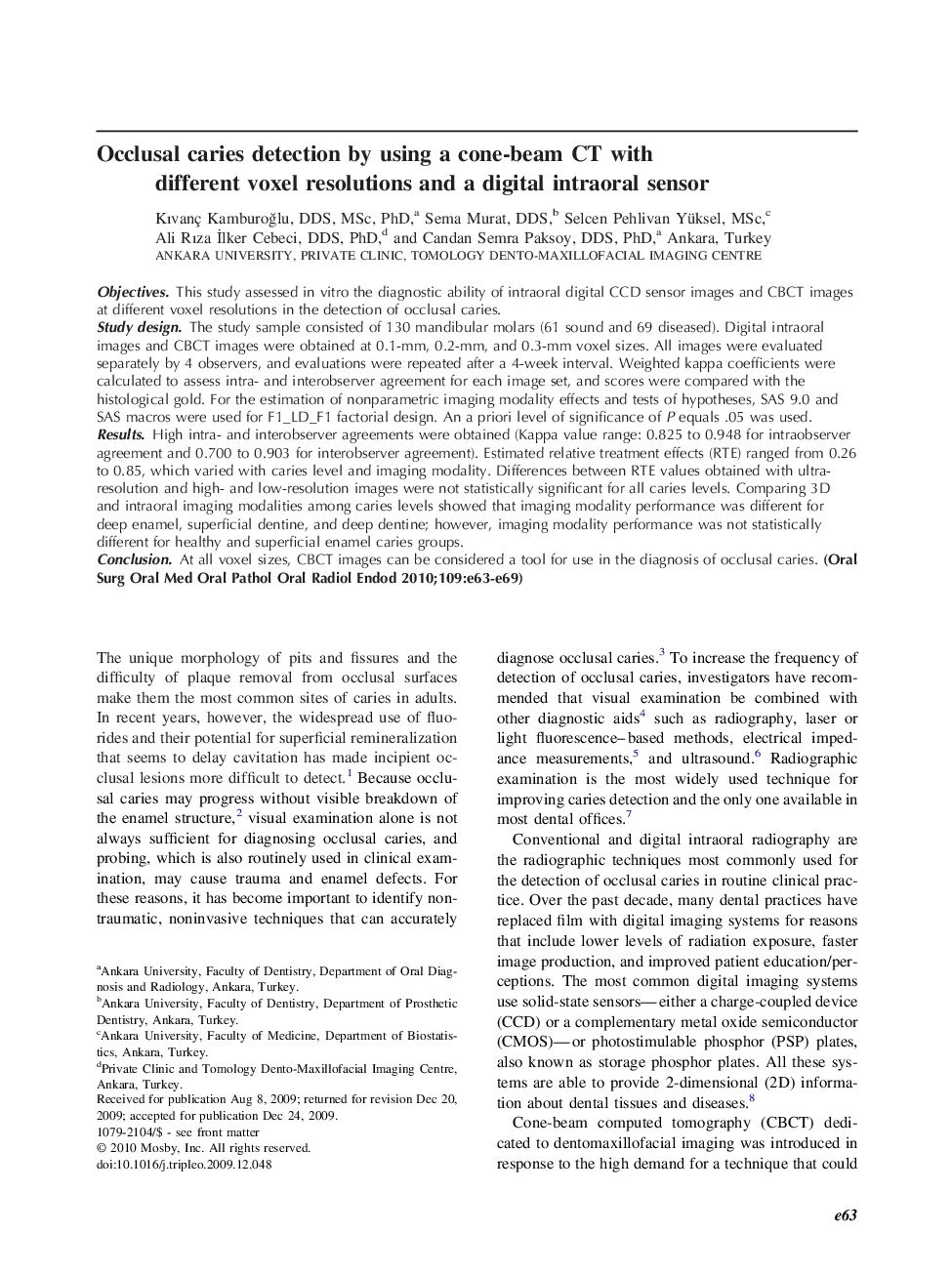| Article ID | Journal | Published Year | Pages | File Type |
|---|---|---|---|---|
| 3167649 | Oral Surgery, Oral Medicine, Oral Pathology, Oral Radiology, and Endodontology | 2010 | 7 Pages |
ObjectivesThis study assessed in vitro the diagnostic ability of intraoral digital CCD sensor images and CBCT images at different voxel resolutions in the detection of occlusal caries.Study designThe study sample consisted of 130 mandibular molars (61 sound and 69 diseased). Digital intraoral images and CBCT images were obtained at 0.1-mm, 0.2-mm, and 0.3-mm voxel sizes. All images were evaluated separately by 4 observers, and evaluations were repeated after a 4-week interval. Weighted kappa coefficients were calculated to assess intra- and interobserver agreement for each image set, and scores were compared with the histological gold. For the estimation of nonparametric imaging modality effects and tests of hypotheses, SAS 9.0 and SAS macros were used for F1_LD_F1 factorial design. An a priori level of significance of P equals .05 was used.ResultsHigh intra- and interobserver agreements were obtained (Kappa value range: 0.825 to 0.948 for intraobserver agreement and 0.700 to 0.903 for interobserver agreement). Estimated relative treatment effects (RTE) ranged from 0.26 to 0.85, which varied with caries level and imaging modality. Differences between RTE values obtained with ultra-resolution and high- and low-resolution images were not statistically significant for all caries levels. Comparing 3D and intraoral imaging modalities among caries levels showed that imaging modality performance was different for deep enamel, superficial dentine, and deep dentine; however, imaging modality performance was not statistically different for healthy and superficial enamel caries groups.ConclusionAt all voxel sizes, CBCT images can be considered a tool for use in the diagnosis of occlusal caries.
